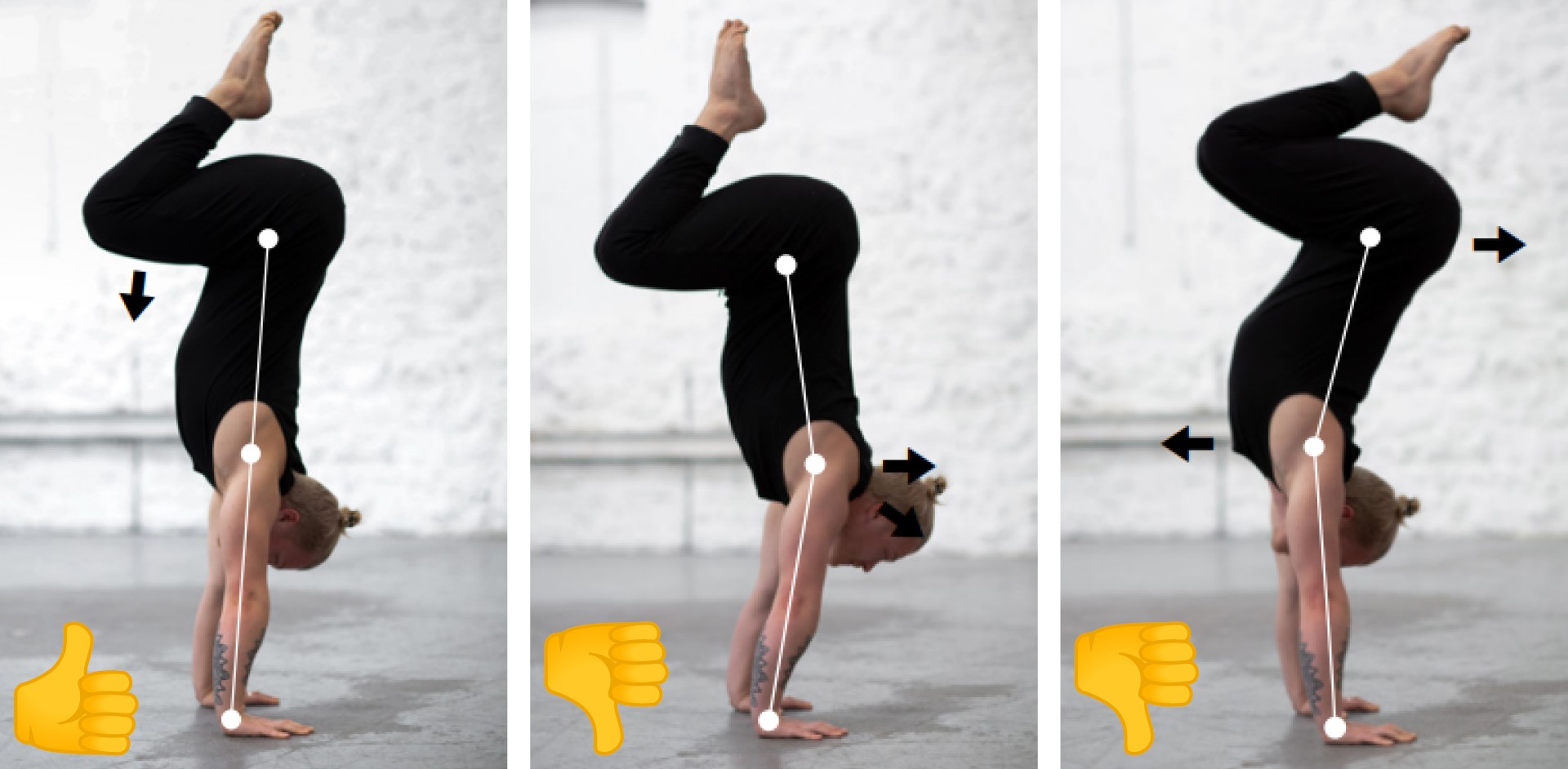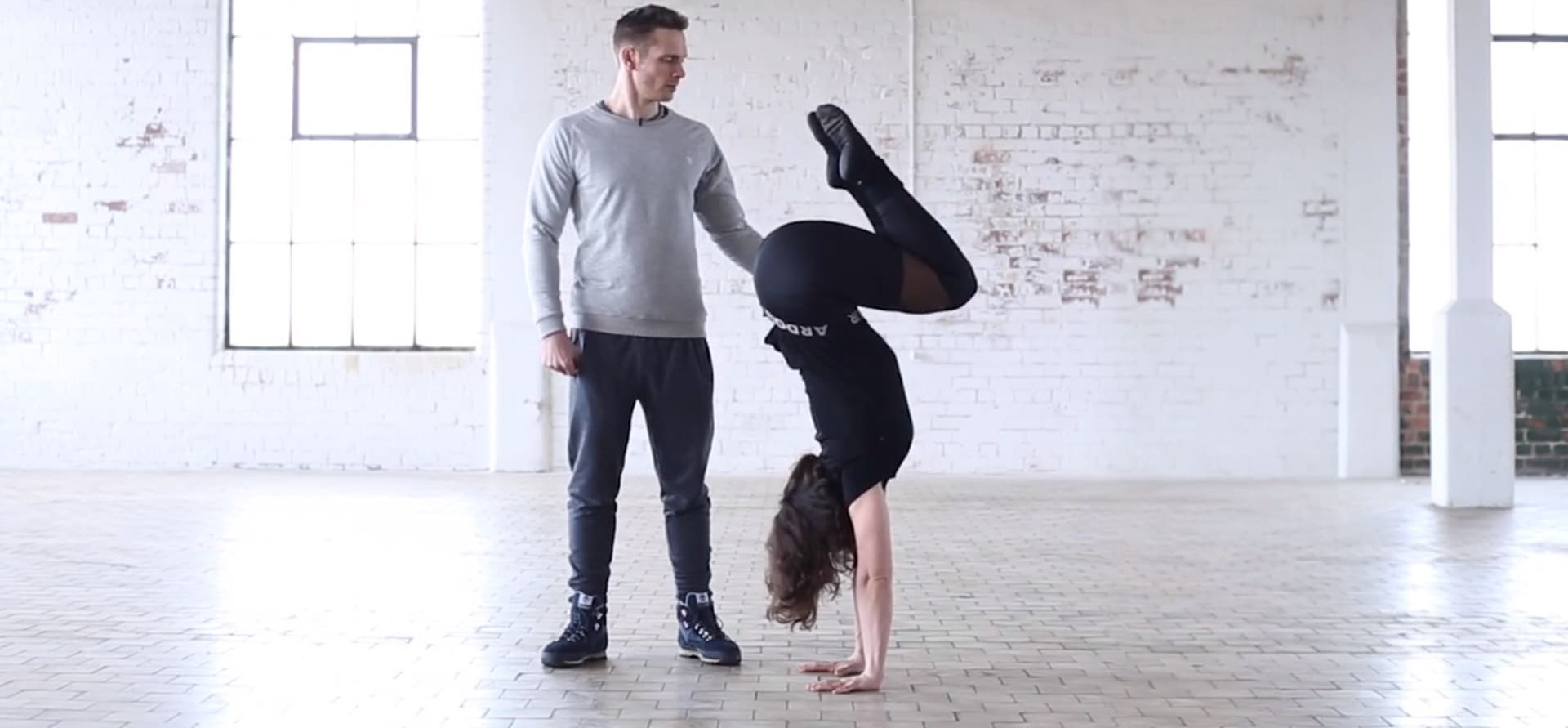In tuck and straddle, my butt sticks out, and I have some curve in the lumbar. Am I a bad person?
Mikael: I’ve gotten this question a few times over the years, often from people obsessing over “textbook” form. Short answer is yes. Long answer is yes. /s
First of all, most people have a butt. Since you have hips, if you’re working on things like tuck or straddle, your hips will likely be behind you. Your feet will be in front to some degree, at least in tuck. Also in straddle if you have some degree of pike in your hips.
Also, for the straddle specifically, if you don’t have a perfect 180º flat split, your feet will go slightly in front of the body. It’s not a problem that your hips pop back a bit. There’s weight in the feet, and in the hips. The fact that you have a hip joint, and have legs – these two have to counterbalance each other.
Emmet: If your hips jutting out, there’ll also be a curve in the lower back. You might end up curving like this to get better shoulder positioning. But the important thing to consider is that it comes down to choice. Are you choosing to arch with the lumbar spine, or is that the only way to solve the problem of balancing a tuck handstand, or straddle?
Mikael: What you should be looking for is if your shoulders are compensating for your hip positioning. Even looking at the best hand balancers from the side when they’re in a straddle one-arm, most of the time you see the feet slightly in front of the body. The butt is sightly on the other side. However, if you trace the line from hand to hip, that would be intact.
If this slight piking of the hip that tuck or straddle can instead makes your shoulders move forward from that hand-to-hip line, or maybe your hips being back forces you to open the shoulders, drifting behind the hands into a micro-backbend – then you might have compensation patterns you should look into addressing. Otherwise, your hips positioning doesn’t make as large of a difference as it might seem.

If you feel like your tuck and straddle handstands do have one of these two shoulder alignment issues, we cover how to address these compensations in our Keep Pushing leg shapes program.
Can’t yet balance a freestanding handstand? Check out our comprehensive beginner program – Push.
If you feel like your tuck and straddle handstands do have one of these two shoulder alignment issues, we cover how to address these compensations in our Keep Pushing leg shapes program.
Can’t yet balance a freestanding handstand? Check out our comprehensive beginner program – Push.

